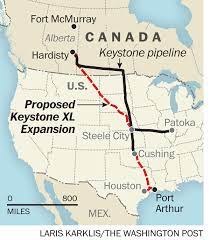Today’s world is tough, real tough, with China, Russia, Iran, and North Korea constantly attempting to do harm to the U.S. and its allies. A tough President is needed to deal with these threats but many politicians are very weak and are not capable of handling them effectively. On the other hand, President Trump has demonstrated that he stood up to any country that tried to take advantage of the U.S., including China, Russia, Iran, North Korea, as well as Europe and NATO.
To continue examining Donald Trump…he’s a “street fighter”. “Turning-the-other-cheek” is not for successful politicians in our tough world. On being elected President, Trump improved his messaging and appointed impressive people to help him develop his policies and lead his Cabinet. He had a resounding electoral victory over Hillary Clinton in 2016, thanks to his strong backbone and outworking her by far. Upon becoming President, he implemented policies that he advocated during the election, including the strongest economy in 50 years and the lowest unemployment rates ever for African-Americans and Hispanic-Americans. If he had been re-elected in 2020, he would have gone down in history as being one of our greatest presidents, and possibly would have even taught Republican Senators how to fight hard for what they believe in. In other words, to be tough when warranted.
I believe that most Trump supporters like him for the same reason that I like him: he has a stiff spine, is not timid, and fights for America first. When he’s criticized by the Press or political opponents, he doubles-down and fights back even harder. In addition, Trump’s focus on illegal immigration, the military, healthcare, war on terror, the economy, the China and the North Korean threats, law and order, etc., touched a nerve with the electorate and he consequently took numerous actions to address all of these.
Failed weak recent Presidential candidates include Mitt Romney, who lost the 2012 Presidential election to President Obama. He was more than capable, as evidenced by his outstanding performance in his first debate with President Obama. When viciously attacked by the Obama campaign, he refused to fight back. Governor Romney’s poor performance came on the heels of Senator John McCain’s poor performance in his 2008 Presidential campaign. Moreover, it also followed President Bush’s unwillingness to fight back when constantly fraudulently accused by the Left that, “Bush lied, people died” about weapons of mass destruction in Iraq. Other failed recent weak Presidents include Joe Biden and Barack Obama.
I’m not advocating that the President of the United States engage in foolish struggles on matters that can’t be won, but I also believe in not backing off when Democrats and the Main Stream Media make false allegations or when other countries threaten us. For example, President Trump imposed tariffs on Chinese products, placed sanctions on Iran after getting out of the insane Iran deal, got the U.S. out of the ridiculous Paris Climate Accords and the job-killing TPP, and frequently legitimately called fake news (ABC,CBS,NBC, CNN, MSNBC, New York Times, Washington Post, etc.), “fake news”.
America needs Donald Trump to prevent a major war, or to end it if President Biden and his Administration already got us into in one or more by election day in November 2024; to stop the massive illegal immigration; to get the price of oil drastically reduced so as to financially hurt U.S. enemies, like Russia, Venezuela, and Iran, as well as to drastically reduce inflation. The time for “Sugar Lips” presidents is over. The U.S. needs a President who puts fear in the hearts of its enemies, especially Xi and Putin: Donald Trump!


